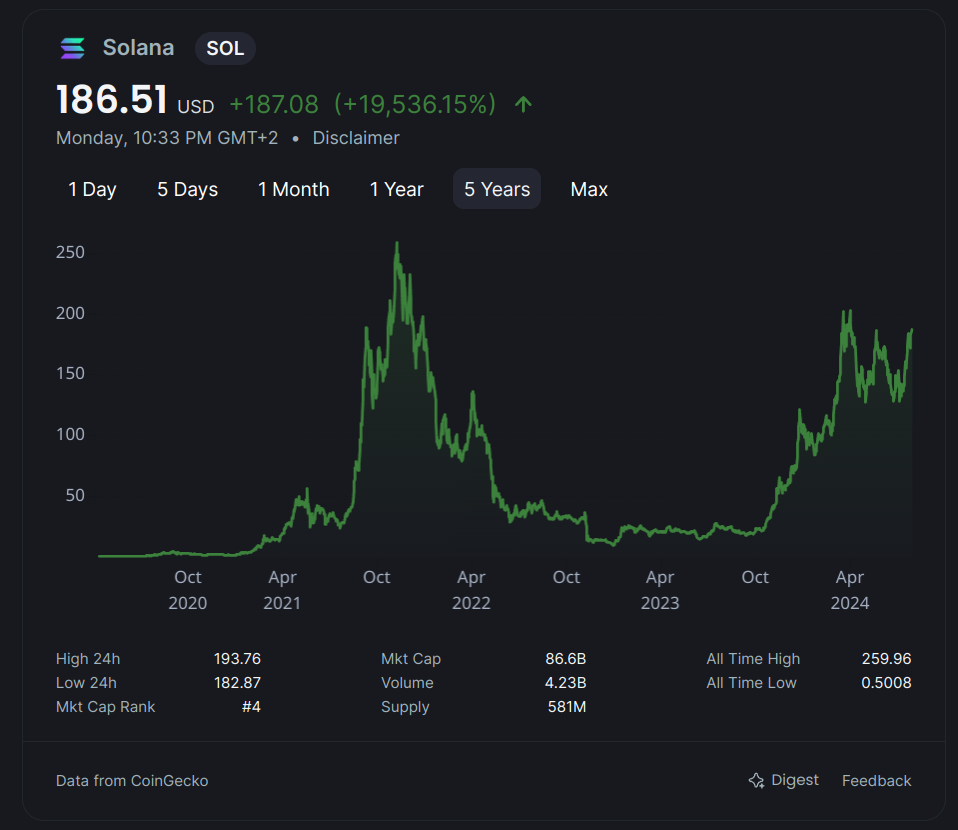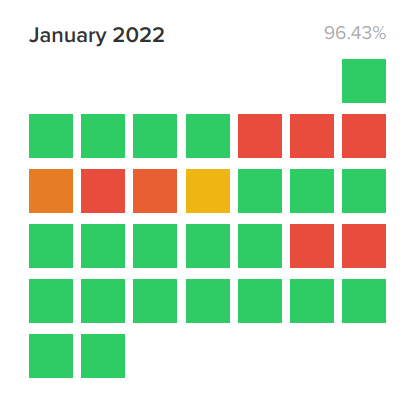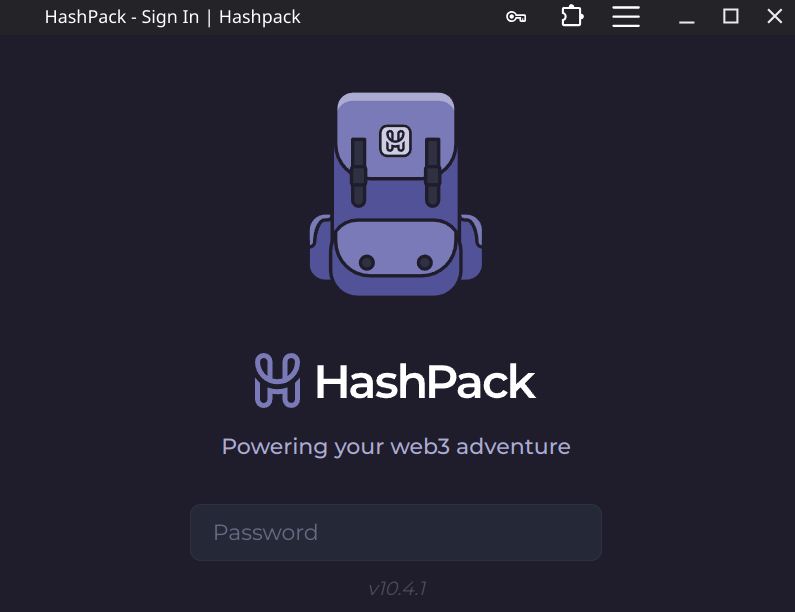12th August 2024
Updated 24th November 2024
It seemed like it was impossible to have an algorithm that was fast, inexpensive and secure at the same time; you always had do sacrifice at least one of them.
In 2016 Leemon Baird invented the Hashgraph consensus algorithm. It claims to have solved this problem.
When I started writing this post, I realized that there are a lot of things to say about Hedera. Therefore I have divided it into 4 parts:
Part 1: Overview
Part 2: Governance and Use Cases
Part 3: Technical Details
Part 4: Can Hedera really do 10,000 TPS? Spoiler alert: Yes.
Challenges with other networks
Bitcoins Proof-of-Work algorithm
The PoW= proof-of-work algorithm, which is used by bitcoin was the first example of a distributed ledger and a milestone for humanity, proving that it was possible to build a safe distributed computer network. Unfortunately we can see today that this algorithm doesn’t scale. It’s becoming slow, expensive and consumes a lot of electricity.
In fact, the bitcoin networks annual electricity consumption is around 160TWh annualy. That is allegedly more than the energy consumption of Norway. If Bitcoin is going to replace today’s economic system, it will require more power than what the entire world produces.
Iv’e heard bitcoin being called digital gold. In some ways bitcoin is similar to gold. In other ways it doesn’t. Whether this digital gold makes sense is a topic for another post. The fact is that bitcoin has failed in becoming a popular medium of exchange and has become a speculative commodity instead.
Ethereums Economy Based Proof-of-stake algorithm
Validators in an Economy based proof-of-stake algorithm has to risk some tokens in order to take part in the validation process. There is no leader involved, anyone can raise their hand and put a block on the chain.
When forking occurs, validators have to vote on which chain to keep. If you vote with the majority, you get rewarded some tokens. If you vote with the minority, you loose some tokens. This should incentivize validators to behave properly. Only one problem: Nobody knows for sure how secure this system is.
Solanas Leader Based Proof-of-stake algorithm
Solana, which might be Hederas biggest competitor when considering speed and security, combine aspects of Proof-of-Stake and leader-based consensus model. The security architecture of Solana is not bad, in theory. It’s allegedly pBFT = practical byzantine fault tolerant, which assumes that there will always be some malicious activity involved. But it’s vulnerable to DDoS attacks due to leader-based consensus algorithm, which will not guarantee fairness either.
The Solana network changes leader frequently to try mitigate DDoS attacks, but if a node in the network is malicious, it can predict future leaders and shut down the leader with a botnet. The other challenge with leader-based it that it may be quite fast, but the leader has to be a powerful computer able to handle a lot of processing from other nodes in the network and put the transactions in order.
While Solana can allegedly handle 65,000 TPS and be relatively secure, it seems like it hasn’t been the most stable network:
February 2024: 4 hour outage. No details about the symptoms. Emergency patch and restart.
February 2023: 18 hour outage. Degraded performance due to introduced bug in new version.
October 2022: 6 hour outage. Not processing transactions. Validator restart.
September 2022: 1 hour outage. Not processing transactions. Validator restart. (probably related to the October incident).
June 2022: 4 hour outage. Block production on Solana Mainnet halted. emergency patch and restart.
May 2022: 4 hour outage. Block production on Solana Mainnet halted. validator restart (probably related to June incident).
April 2022: 4 hour outage. Block production on Solana Mainnet halted. validator restart (probably related to June and May incident).
January 2022: Solana experience about a week of network instabilities and performance degradation due to various bugs that had to be squashed.
Further back than that feels unfair since Solana was launched in 2020. Some bugs and outages should be expected the first year.
The reasons for so many outages could understandably be due to Solanas extreme growth since it’s launch. That must have put a lot of pressure on the developers.

Hedera Overview
While everybody else got busy building apps on blockchains, Hedera focused on the core concept of a distributed ledger: Reaching Consensus at scale.
What was so remarkable with Hedera when it launched, was how much faster it was compared to bitcoin and Ethereum (this was before Layer 2 blockchains was invented).
Bitcoin = 7 TPS
Ethereum = 14TPS
Hederas = 10,000 TPS
Theoretically Hedera can do more than 100,000 TPS if unthrottled. That opens up alot of new technologies that is not possible to run on Bitcoin or Ethereum.
What is also amazing is that it achieves this speed without any sacrifice on security or decentralization. It all comes down to ingenious math. Hedera is mathematically proven to be aBFT = Asynchronous Byzantine Fault Tolerant and it is the gold standard of secure communication. It reaches full consensus with absolute certainty in just a few seconds, without requiring a leader that can be targeted.
What this gives, apart from DDoS reciliency, is fairness. You are guaranteed that the events created on the ledger will appear in the exact order when the majority of nodes first heard about it. With fairness and high throughput, you can for example create decentralized stock-markets or auctions that guarantees that the bids are coming in the right order.
How it started
My first exposure to Hedera was when I watched Mike Maloney’s Hidden Secrets of Money Part 8 where he interviews Leemon Baird and Mance Harmon, Founders of Hedera. This was back in 2017.
When Leemon and Mance were developing Hedera, their goal was to change how people perceive the Internet.
“We want to make the internet what it should have been from the beginning, but nobody stopped to figure out the right way to do this. And then the internet grew up in such a way that there are serious architectural flaws, security flaws and a lack of trust in a real sense. And we see the opportunity to fix that problem.” - Mance Harmon
So the Hashgraphs role is to be put on top of the existing internet infrastructure, like an overlay, to fix all the problems with the internet today.
Leemon explains his vision:
“My goal is that we should have anyone on earth, at any moment, can just wave their hand and carve out a chunk of cyberspace. Carve out a world of their own, for free…”
He then goes on about inviting friends to these “shared worlds” and how everything is fair and free:
We should be able to create files, movies documents together, but nobody can be the dictator and delete files for other people (which is theoretically possible with cloud storage today. I have even done it to myself, ignorantly).
One of these “worlds” could for example be a stock market, where the bids comes in the exact order they were announced at.
All of these “worlds” are going to be able to interconnect in a trustful way.
It is all supposed to be totally for free, no servers involved and the entire hashgraph is supposed to be able to run from a cellphone.
“This is the vision of what we want the Internet to be. It will change the way we even look at how the internet is.”- Leemon Baird
The goal is to fundamentally change the concepts of how we interact with the internet today. They are real visionaries.
How it is going
The Hedera mainnet launched in September 2019. It still might not be on par with Leemons vision yet. Rome wasn’t built in a day afterall. Hedera is in this for the long run. They treat Hedera as a 100 year project.
Cost
While Hedera is not entirely for free, their transaction costs are dirt cheap. No, cheaper than dirt. For the most common transaction types it only has a fixed fee of $0.0001. For comparison, I recently made a small transaction on Ethereum for testing purposes and it costed me about a dollar instead.
Tokenomics - HBAR
What is a bit disappointing is that their native token HBAR hasn’t got alot of hype in the crypto currency market yet.

At the same time HBAR peaked around $0.5, Solanas SOL had risen to $250, before it crashed to $25.
One explanation could be that it is hard to find DeFi wallets, exchanges and stable-coins that supports Hedera. Why it hasn’t caught much attention from DeFi developers, I’m not sure.
Another possible explanation is that the transaction cost is cheaper than dirt and there is a lot of tokens in circulation. That means that the demand for HBAR is relatively low, even with thousands of TPS.
Note: There is still 14% unallocated supply of HBAR. I wonder how that will affect the perceived value of an HBAR when it reaches 0.
A third reason could be that there are maybe a hundred different Ledgers out there at the moment. The people I met that are interested in blockchain technology, have mostly never heard of Hedera, even if they been following the development much longer than me. They have their own favorites, like Solana or Cardano that have I heard being mentioned repeatedly.
But is this really what matters? Is the point to just speculate in which crypto currencies will be more worth, as perceived by the market? I thought we were supposed to use crypto currencies to pay each other outside of the banking system.
Performance
Today Hedera handles more than 2000 TPS real-time. That is more than all the other networks combined on the TPS Dashboard. It’s not like other networks can’t do more than that, but it clearly shows where the DApp developers prefers to go. The value of the native token should come from how useful the network is. I’m not claiming that Hedera is perfect, but to my knowledge it’s the best alternative out there right now.
UPDATE: This business really change rapidly! Only about 3 months has passed and Hedera have sunken to 6th place! (Max REC. TPS) I would however take the the TPS Dashboard with a grain of salt. Not all information are a 100% accurate.
For this reason I believe Bitcoin and Ethereum to be highly overvalued. I guess most people are just following the market trends, instead of looking at the technical details. I found a good reddit comment to sum it all up:
(hey hey HEY... Bitconneeeeect!)
Node Requirements
For a local node, you may actually be able to run the hashgraph consensus algorithm on a smartphone:
CPUs: 6
Memory: 8 GB
Swap: 1 GB
Disk Image Size: 64 GB
However, for a public node it’s another story:
CPUs: top rated CPU with 24 cores / 48 threads
Memory: 256 GB
Disk Usage: 5TB on NVMe SSD
Internet Connection: minimum 200MB with public IPv4 address
Even if you could meet those requirements, you can’t participate in the validation if you are not part of the Hedera Governing Council (for now). That will be covered in part 2.







